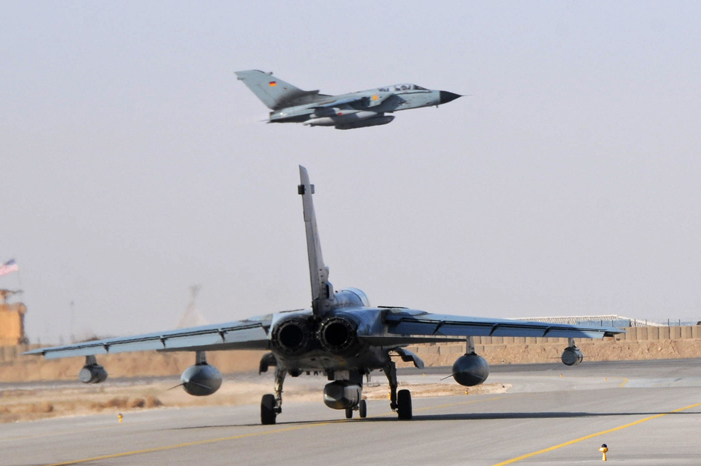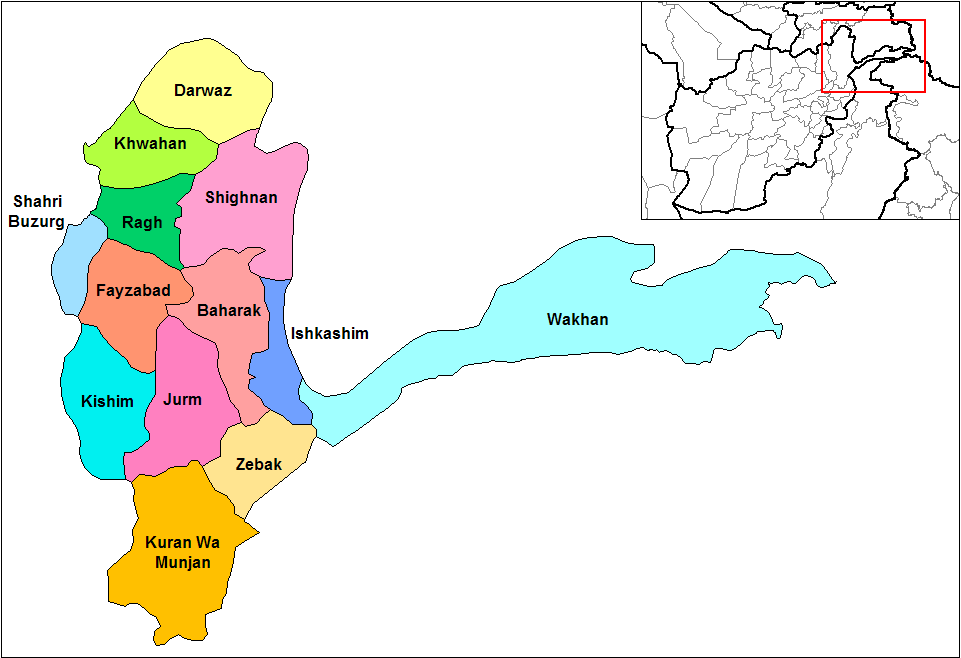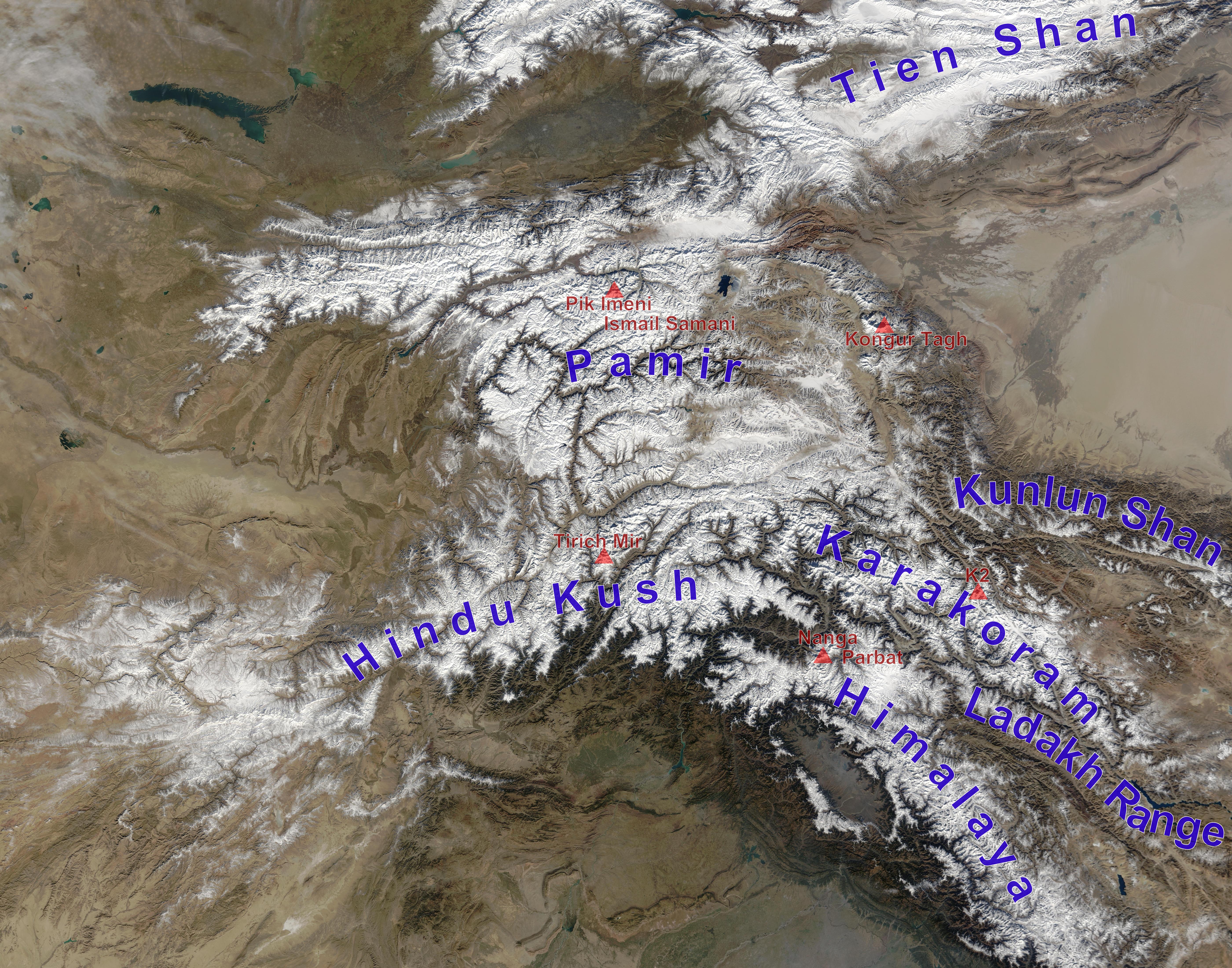|
Balkh
Balkh is a town in the Balkh Province of Afghanistan. It is located approximately to the northwest of the provincial capital city Mazar-i-Sharif and approximately to the south of the Amu Darya and the Afghanistan–Uzbekistan border. In 2021–2022, the National Statistics and Information Authority reported that the town had 138,594 residents. Listed as the List of cities in Afghanistan, eighth largest settlement in the country, unofficial 2024 estimates set its population at around 114,883 people. Historically, the site of present-day Balkh was held in considerably high regard due to its religious and political significance in Ariana. A hub of Zoroastrianism and Buddhism, the ancient city was also known to the Ancient Iran, Persians as Zariaspa and to the Ancient Greece, Greeks as Bactra, giving its name to Bactria. As such, it was famously known as the capital of Bactria or Tokharistan. The Italian explorer and writer Marco Polo described Balkh as "a noble city and a great ... [...More Info...] [...Related Items...] OR: [Wikipedia] [Google] [Baidu] |
Balkh Province
Balkh (Dari and , ) is one of the 34 provinces of Afghanistan, located in the north of the country. It is divided into 15 districts and has a population of about 1,509,183, which is multi-ethnic and mostly a Persian-speaking society. The city of Mazar-i-Sharif is the capital and largest city of the province. The Mawlana Jalaluddin Mohammad Balkhi International Airport and Camp Marmal sit on the eastern edge of Mazar-i-Sharif. Balkh, also called Vazīrābād, the name of the province is derived from the ancient city of Balkh, near the modern town. The city of Mazar-e-Sharif has been an important stop on the trade routes from the Far East to the Middle East, the Mediterranean and Europe. Home to the famous blue mosque, it was once destroyed by Genghis Khan but later rebuilt by Timur. The city of Balkh and the area of Balkh Province were considered a part of various historical regions in history including Ariana and Greater Khorasan. The province serves today as Afghanistan's ... [...More Info...] [...Related Items...] OR: [Wikipedia] [Google] [Baidu] |
Mazar-i-Sharif
Mazar-i-Sharīf ( ; Dari and ), also known as Mazar-e Sharīf or simply Mazar, is the fifth-largest city in Afghanistan by population, with the estimates varying from 500,000-680,000. It is the capital of Balkh province and is linked by highways with Kunduz in the east, Kabul in the southeast, Herat in the southwest and Termez, Uzbekistan in the north. It is about from the Uzbek border. The city is also a tourist attraction because of its famous shrines as well as the Islamic and Hellenistic archeological sites. The ancient city of Balkh is also nearby. The region around Mazar-i-Sharif has been historically part of Greater Khorasan and was controlled by the Tahirids followed by the Saffarids, Samanids, Ghaznavids, Ghurids, Ilkhanids, Timurids, and Khanate of Bukhara until 1751 when it became part of the Durrani Empire (although under autonomous emirs). Eventually the city passed to a few local rulers before becoming part of Afghanistan in 1849. Mazar-i-Sharif is th ... [...More Info...] [...Related Items...] OR: [Wikipedia] [Google] [Baidu] |
Green Mosque, Balkh
The Green Mosque (Pashto: شنه جومات ; ), or the Mosque of Khawaja Abu Nasr Parsa (Pashto; د خواجه ابو نصر پارسا جومات) is a mosque in the city of Balkh, northern Afghanistan. It contains the Shrine of Khwaja Abu Nasr Parsa. The mosque's name is derived from the kashi tiles on the walls of the mosque, which are coloured turquoise, known locally as Turkish Green. History The original building was constructed by the Timurid general Mir Mazid Arghun over the grave of Khawaja Abu Nasr Parsa, a local religious teacher and mystic of the Naqshbandi order. Later on, Arghun's father and brother were buried there. Arghun also constructed a madrasah next to the mosque. The mosque, shrine and madrasah complex was then put under the management of the descendants of Abu Nasr Parsa. The Shaybanid governor of Balkh, Abdul-Mo'min bin Abdullah Khan, later renovated the building in the late 16th century, inscribing his name on one of the walls as well. The mosque ... [...More Info...] [...Related Items...] OR: [Wikipedia] [Google] [Baidu] |
Districts Of Afghanistan
The districts of Afghanistan, known as ''wuleswali'' (, ''wuləswāləi''; , ''wuləswālī''; ''ulasvolik''), are secondary-level administrative units, one level below Provinces of Afghanistan, provinces. The Afghan government issued its first district map in 1973. It recognized 325 districts, counting ''wuleswalis'' (districts), ''alaqadaries'' (sub-districts), and ''markaz-e-wulaiyat'' (provincial center districts). In the ensuing years, additional districts have been added through splits, and some eliminated through merges. In June 2005, the Afghan government issued a map of 398 districts. It was widely adopted by many information management systems, though usually with the addition of ''Sharak-e-Hayratan'' for 399 districts in total. It remains the ''de facto'' standard as of late 2018, despite a string of government announcements of the creation of new districts. The latest announced set includes 421 districts. The country's Central Statistics Office (CSO) and the Indepe ... [...More Info...] [...Related Items...] OR: [Wikipedia] [Google] [Baidu] |
Afghanistan
Afghanistan, officially the Islamic Emirate of Afghanistan, is a landlocked country located at the crossroads of Central Asia and South Asia. It is bordered by Pakistan to the Durand Line, east and south, Iran to the Afghanistan–Iran border, west, Turkmenistan to the Afghanistan–Turkmenistan border, northwest, Uzbekistan to the Afghanistan–Uzbekistan border, north, Tajikistan to the Afghanistan–Tajikistan border, northeast, and China to the Afghanistan–China border, northeast and east. Occupying of land, the country is predominantly mountainous with plains Afghan Turkestan, in the north and Sistan Basin, the southwest, which are separated by the Hindu Kush mountain range. Kabul is the country's capital and largest city. Demographics of Afghanistan, Afghanistan's population is estimated to be between 36 and 50 million. Ancient history of Afghanistan, Human habitation in Afghanistan dates to the Middle Paleolithic era. Popularly referred to as the graveyard of empire ... [...More Info...] [...Related Items...] OR: [Wikipedia] [Google] [Baidu] |
Balkh District
Balkh District () is a district in Balkh province, Afghanistan Afghanistan, officially the Islamic Emirate of Afghanistan, is a landlocked country located at the crossroads of Central Asia and South Asia. It is bordered by Pakistan to the Durand Line, east and south, Iran to the Afghanistan–Iran borde .... References Districts of Balkh Province {{Balkh-geo-stub ... [...More Info...] [...Related Items...] OR: [Wikipedia] [Google] [Baidu] |
Provinces Of Afghanistan
The provinces of Afghanistan ( ''Wilayah, wilāyat'') are the primary administrative divisions. Afghanistan is divided into 34 provinces. Each province encompasses a number of Districts of Afghanistan, districts or usually over 1,000 villages. Provincial governors played a critical role in the reconstruction of the Afghan state following the creation of the new government under Hamid Karzai. According to international security scholar Dipali Mukhopadhyay, many of the provincial governors of the western-backed government were former warlords who were incorporated into the political system. Provinces of Afghanistan Administrative The following table lists the province, capital, number of districts, UN region, region, ISO 3166-2:AF code and license plate code. Demographic The following table lists the province, population in 2024, area in square kilometers and population density. Regions of Afghanistan The following tables summarize data from the demographic ... [...More Info...] [...Related Items...] OR: [Wikipedia] [Google] [Baidu] |
Tokharistan
Tokharistan (formed from "Tokhara" and the suffix ''-stan'' meaning "place of" in Persian) is a historical name used by Islamic sources in the early Middle Ages to refer to the area which was known as Bactria in Ancient Greek sources. By the 6th century CE, Tokharistan came under rule of the First Turkic Khaganate, and in the 7th and 8th centuries, it was incorporated into the Tang dynasty, administered by the Protectorate General to Pacify the West. Today, Tokharistan is fragmented between Afghanistan, Uzbekistan and Tajikistan. Names Several languages have used variations of the word "Tokhara" to designate the region: * Tokharistan may appear in ancient Indian sources as the Kingdom of Tushara, to the northwest of the Indian subcontinent. "Tushara" is the Sanskrit word for "snowy" "frigid", and is known to have been used to designate the country of Tukhara. In Sanskrit, it became तुखार (Tukhāra). * In ancient Greek, the name was Tokharoi ( ) or Thaguroi. * Tocha ... [...More Info...] [...Related Items...] OR: [Wikipedia] [Google] [Baidu] |
Balkh River
The Balkh River (; ) or Balkhab, also known in its upper reaches as the Band-e Amir River, is a river in northern Afghanistan. The river rises in the Band-e Amir lakes in Bamyan Province in the Hindu Kush. The river flows west, then north, and terminates in irrigation canals in the area of the cities of Balkh and Mazar-e Sharif or in the desert. In times of exceptional flood the river drains into the lowlands of Turkmenistan. In ancient times the river terminated in a delta at the Amu Darya The Amu Darya ( ),() also shortened to Amu and historically known as the Oxus ( ), is a major river in Central Asia, which flows through Tajikistan, Turkmenistan, Uzbekistan, and Afghanistan. Rising in the Pamir Mountains, north of the Hindu Ku ..., but has not reached that river since irrigation canals were developed centuries ago. p.5 References Landforms of Balkh Province Rivers of Afghanistan {{Balkh-geo-stub ... [...More Info...] [...Related Items...] OR: [Wikipedia] [Google] [Baidu] |
Bactria
Bactria (; Bactrian language, Bactrian: , ), or Bactriana, was an ancient Iranian peoples, Iranian civilization in Central Asia based in the area south of the Oxus River (modern Amu Darya) and north of the mountains of the Hindu Kush, an area within the north of modern Afghanistan, Tajikistan and Uzbekistan. Bactria was strategically located south of Sogdia and the western part of the Pamir Mountains. The extensive mountain ranges acted as protective "walls" on three sides, with the Pamir on the north and the Hindu Kush on south forming a junction with the Karakoram, Karakoram range towards the east. Called "beautiful Bactria, crowned with flags" by the Avesta, the region is considered, in the Zoroastrianism, Zoroastrian faith, to be one of the "Avestan geography, sixteen perfect Iranian lands" that the supreme deity, Ahura Mazda, had created. It was once a small and independent kingdom struggling to exist against nomadic Turya (Avesta), Turanians. One of the early centres of ... [...More Info...] [...Related Items...] OR: [Wikipedia] [Google] [Baidu] |
Dari
Dari (; endonym: ), Dari Persian (, , or , ), or Eastern Persian is the variety of the Persian language spoken in Afghanistan. Dari is the Afghan government's official term for the Persian language;Lazard, G.Darī – The New Persian Literary Language", in ''Encyclopædia Iranica'', Online Edition 2006. it is known as Afghan Persian or Eastern Persian in many Western sources. The decision to rename the local variety of Persian in 1964 was more political than linguistic to support an Afghan state narrative. Dari Persian is most closely related to Tajiki Persian as spoken in Tajikistan and the two share many phonological and lexical similarities. Apart from a few basics of vocabulary, there is little difference between formal written Persian of Afghanistan and Iran; the languages are mutually intelligible. Dari is the official language for approximately 30.6 million people in Afghanistan and it serves as the common language for inter-ethnic communication in the country. ... [...More Info...] [...Related Items...] OR: [Wikipedia] [Google] [Baidu] |
Tajiks
Tajiks (; ; also spelled ''Tadzhiks'' or ''Tadjiks'') is the name of various Persian-speaking Eastern Iranian groups of people native to Central Asia, living primarily in Afghanistan, Tajikistan and Uzbekistan. Even though the term ''Tajik'' does not refer to a cohesive cross-national ethnic group,Nourzhanov, K., & Bleuer, C. (2013). Forging Tajik Identity: Ethnic Origins, National–Territorial Delimitation and Nationalism. In Tajikistan: A Political and Social History (pp. 27–50). ANU Press. Link/ref> Tajiks are the largest ethnicity in Tajikistan, and the second-largest in both Afghanistan and Uzbekistan. They speak variations of Persian, a west Iranian language. In Tajikistan, since the 1939 Soviet census, its small Pamiri and Yaghnobi ethnic groups are included as Tajiks. In China, the term is used to refer to its Pamiri ethnic groups, the Tajiks of Xinjiang, who speak the Eastern Iranian Pamiri languages. In Afghanistan, the Pamiris are considered a separate ethn ... [...More Info...] [...Related Items...] OR: [Wikipedia] [Google] [Baidu] |






